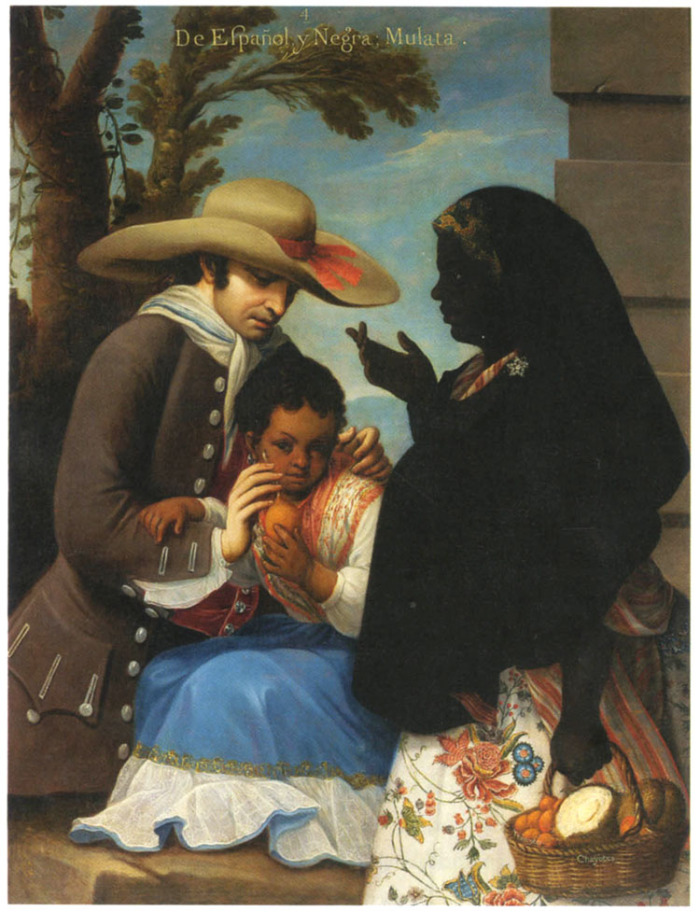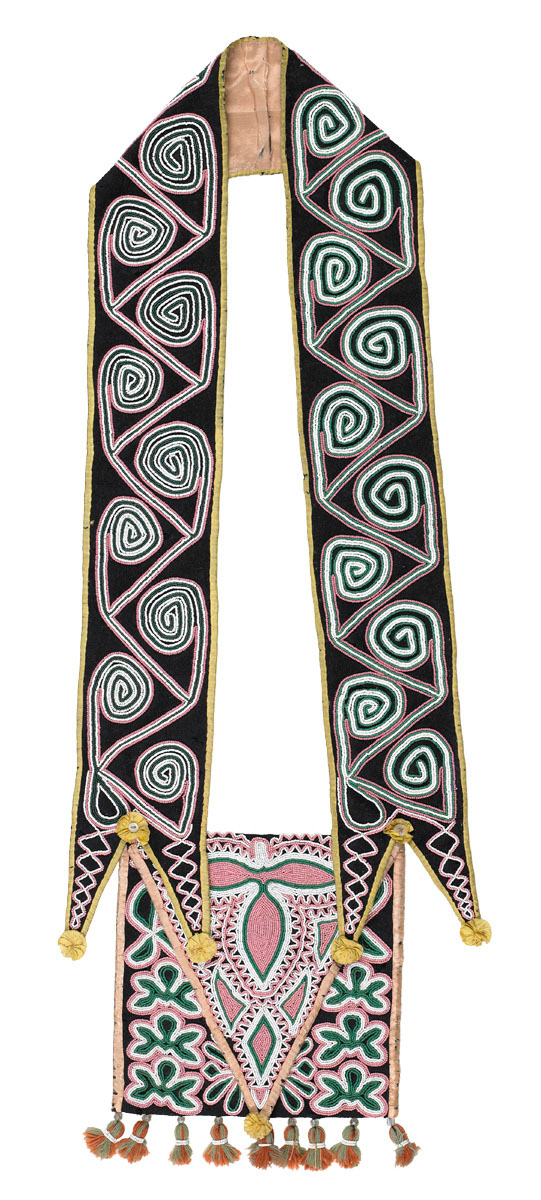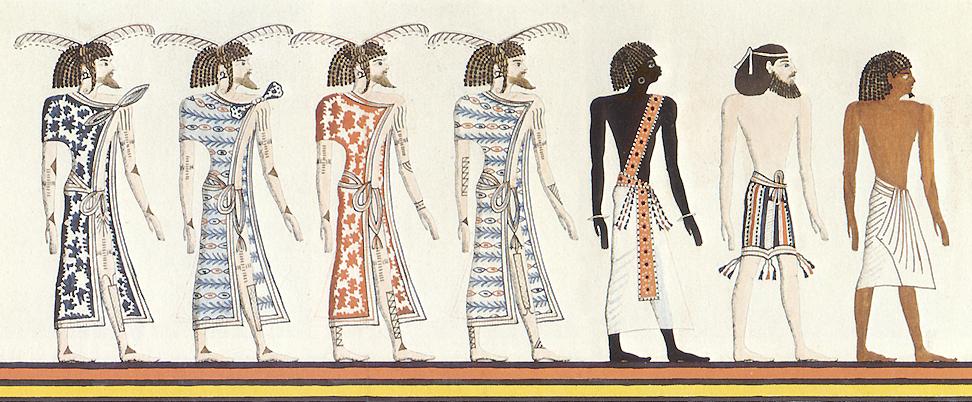|
Dominickers
The Dominickers are a small biracial or triracial ethnic group that was once centered in the Florida Panhandle county of Holmes, in a corner of the southern part of the county west of the Choctawhatchee River, near the town of Ponce de Leon. The group was classified in 1950 as one of the "reputed Indian-White-Negro racial isolates of the Eastern United States" by the United States Census Bureau. Few facts are known about their origins, and little has been published about this group. First mention and origins The first known mention in print of the Dominickers is an article in ''Florida: A Guide to the Southernmost State'', published by the Federal Writers' Project in 1939. The article "Ponce de Leon" identifies the Dominickers as being mixed-race descendants of the widow of a pre-Civil War plantation owner and one of her black slaves, by whom she had five children. (A separate oral tradition has it that the slave was the mixed-race or mulatto half-brother of the woman's decease ... [...More Info...] [...Related Items...] OR: [Wikipedia] [Google] [Baidu] |
Holmes County, Florida
Holmes County is a County (United States), county located in the northwestern part of the U.S. state of Florida, in the Florida Panhandle, Panhandle. As of the 2020 United States census, 2020 census, the population was 19,653. Its county seat is Bonifay, Florida, Bonifay. History Holmes County was created in 1848. The county's namesake is a point of debate. Holmes Creek (Florida), Holmes Creek – the county's eastern boundary – bore that name before the county was created, but it was originally named ''Weekaywehatchee'' (a Muscogee language, Muscogee name meaning "spring creek"). One claim is that the county was named for Thomas J. Holmes, who came from North Carolina to settle in the area about 1830. Another is that it is named after Holmes, an American Indian chief who settled in the area with his band of Red Sticks, Red Stick Muscogee, Creek after 1814. He was subsequently killed in 1818 by a raiding party sent by Andrew Jackson during the First Seminole War. Holmes Coun ... [...More Info...] [...Related Items...] OR: [Wikipedia] [Google] [Baidu] |
Dominiques
The Dominique is an American breed of chicken, characterized by black-and-white barred plumage and a rose comb. It is considered to be the oldest American chicken breed, and is thought to derive from birds brought to America by colonists from southern England. It was well known by about 1750, and by the mid-nineteenth century was widely distributed in the eastern United States. It is a dual-purpose breed, but is kept principally for its brown eggs. It became an endangered breed in the twentieth century, but numbers have since recovered. History The origins of the Dominique are unknown. It is considered to be the oldest American chicken breed, and is thought to derive from birds – probably similar to the modern Dorking or Sussex breeds – brought to America by colonists from southern England. Chickens with barred plumage, with either a single or a rose comb, were well known by about 1750, and by the mid-nineteenth century were widely distributed in the eastern United States ... [...More Info...] [...Related Items...] OR: [Wikipedia] [Google] [Baidu] |
Sam Story
Sam Story, also named Timpoochee Kinnard, was Chief of the Walton County, Florida, band of Euchee (Yuchi) Indians in the early 19th century, who occupied the lands on and to the west of the Choctawhatchee River. His parents were Timothy Kinnard, a white man of Scottish descent, and an unknown Yuchi woman. The chief was a well-known figure in the Florida Panhandle and was highly respected by whites, who migrated to the area in ever-increasing numbers following the acquisition of Florida by the United States from Spain in 1821. In the spring of 1820, Neil McLennan and brother-in-law Daniel Campbell moved their families from Richmond County, North Carolina, to Walton County, Florida, where they were invited by Chief Sam Story to settle on lands adjoining his on Bruce Creek in the Euchee Valley. These Scots first camped near Pensacola and met the Chief in town when he was there trading for supplies. After becoming the first white settlers in Walton County, they were soon joined by o ... [...More Info...] [...Related Items...] OR: [Wikipedia] [Google] [Baidu] |
Mulatto
( , ) is a Race (human categorization), racial classification that refers to people of mixed Sub-Saharan African, African and Ethnic groups in Europe, European ancestry only. When speaking or writing about a singular woman in English, the word is (). The use of this term began in the United States shortly after the Atlantic slave trade began and its use was widespread, derogatory and disrespectful. After the post Civil Rights Era, the term is now considered to be both outdated and offensive in the United States. In other Anglophone countries (the English-speaking world) such as English and Dutch-speaking West Indian countries, the word mulatto is still used. Countries with the highest percentages of persons who have equally high European and African ancestry — ''Mulatto'' — are the Dominican Republic (74%) and Cape Verde (71%). Mulattos in many Latin American countries, aside from predominately European and African ancestry, usually also have slight indigenous ad ... [...More Info...] [...Related Items...] OR: [Wikipedia] [Google] [Baidu] |
Gainesville, Florida
Gainesville is the county seat of Alachua County, Florida, United States, and the most populous city in North Central Florida, with a population of 145,212 in 2022. It is the principal city of the Gainesville metropolitan area, Florida, Gainesville metropolitan area with a population of 350,903 in 2022. Gainesville is home to the University of Florida, the List of largest United States university campuses by enrollment, third-largest public university campus by enrollment in the United States as of the 2023–2024 academic year. The university is represented by the Florida Gators sports teams in National Collegiate Athletic Association, NCAA competitions. History There is archeological evidence, from about 12,000 years ago, of the presence of Paleo-Indians in the Gainesville area, although it is not known if there were any permanent settlements. A Deptford culture campsite existed in Gainesville and was estimated to have been used between 500 BCE and 100 CE. The Deptford peop ... [...More Info...] [...Related Items...] OR: [Wikipedia] [Google] [Baidu] |
Washington County, Florida
Washington County is a county located in the northwestern part of the U.S. state of Florida, in the Panhandle. As of the 2020 census, the population was 25,318. Its county seat is Chipley. Washington County is included in the Panama City—Panama City Beach, Florida Metropolitan Statistical Area. History Washington County was created in 1825, and was nearly twice the size of the State of Delaware, stretching all the way to the Gulf of Mexico. After a century of boundary shifts, the county, with over of rolling hills covered in thick, stately pines and mixed hardwood forests, now covers a large portion of the central Florida Panhandle. Over a span of more than 150 years, Washington County has seen Native American, Spanish and English cultural influences. The county's historical lore is rich with stories of the exploits of Andrew Jackson. There are numerous Native American mounds and evidence of strong settlements still being discovered. Named after George Washington, the ... [...More Info...] [...Related Items...] OR: [Wikipedia] [Google] [Baidu] |
Walton County, Florida
Walton County is a County (United States), county located on the Emerald Coast in the northwestern part of the U.S. state of Florida, with its southern border on the Gulf of Mexico. As of the 2020 United States census, 2020 census, the population was 75,305. Its county seat is DeFuniak Springs, Florida, DeFuniak Springs. The county is home to the highest natural point in Florida: Britton Hill, at . Walton County is included in the Crestview–Fort Walton Beach–Destin metropolitan area, Crestview–Fort Walton Beach–Destin Metropolitan Statistical Area. History Walton County was organized by European Americans in 1824. It was named for Colonel George Walton Jr., secretary of the Florida Territory from 1821 to 1826. Walton, the son of George Walton, a signer of the Declaration of Independence, was born August 15, 1786, in Augusta, Georgia, Augusta, Georgia (U.S. state), Georgia, and died March 20, 1859, in Petersburg, Virginia, Petersburg, Virginia. Between 1763 and 1783 th ... [...More Info...] [...Related Items...] OR: [Wikipedia] [Google] [Baidu] |
Creek People
The Muscogee, also known as the Mvskoke, Muscogee Creek or just Creek, and the Muscogee Creek Confederacy ( in the Muscogee language; English: ), are a group of related Indigenous peoples of the Southeastern WoodlandsTranscribed documents Sequoyah Research Center and the American Native Press Archives in the . Their historical homelands are in what now comprises southern , much of , western |
High Yellow
High yellow, occasionally simply yellow (dialect: yaller, yella), is a term used to describe a light-skinned black person . It is also used as a slang for those thought to have "yellow undertones". The term was in common use in the United States at the end of the 19th century and the mid 20th century. Etymology "High" is usually considered a reference to a social class system in which skin color (and associated ancestries) is a major factor, placing those of lighter skin (with more White ancestry) at the top and those of darker skin at the bottom. High yellows, while still considered part of the African-American ethnic group, were thought to gain privileges because of their skin and ancestry. "Yellow" is in reference to the usually very pale undertone to the skin color of members of this group, due to mixture with white people. Another reading of the etymology of the word "high" is that it is a slang word for "very", often used in Southern English, therefore "very yellow" ( ... [...More Info...] [...Related Items...] OR: [Wikipedia] [Google] [Baidu] |
Native Americans In The United States
Native Americans (also called American Indians, First Americans, or Indigenous Americans) are the Indigenous peoples of the Americas, Indigenous peoples of the United States, particularly of the Contiguous United States, lower 48 states and Alaska. They may also include any Americans whose origins lie in any of the indigenous peoples of North or South America. The United States Census Bureau publishes data about "American Indians and Alaska Natives", whom it defines as anyone "having origins in any of the original peoples of North and South America ... and who maintains tribal affiliation or community attachment". The census does not, however, enumerate "Native Americans" as such, noting that the latter term can encompass a broader set of groups, e.g. Native Hawaiians, which it tabulates separately. The European colonization of the Americas from 1492 resulted in a Population history of Indigenous peoples of the Americas, precipitous decline in the size of the Native American ... [...More Info...] [...Related Items...] OR: [Wikipedia] [Google] [Baidu] |
Negro
In the English language, the term ''negro'' (or sometimes ''negress'' for a female) is a term historically used to refer to people of Black people, Black African heritage. The term ''negro'' means the color black in Spanish and Portuguese (from latin language, Latin ''niger''), where English took it from. The term can be viewed as Offensive language, offensive, inoffensive, or completely neutral, largely depending on the region or country where it is used, as well as the time period and context in which it is applied. It has various equivalents in other languages of Europe. In English Around 1442, the Portuguese first arrived in Southern Africa while trying to find a sea route to India. The term , literally meaning 'black', was used by the Spanish and Portuguese as a simple description to refer to the Bantu peoples that they encountered. denotes 'black' in Spanish and Portuguese, derived from the Latin word '':wikt:niger#Latin, niger'', meaning 'black', which itself is probabl ... [...More Info...] [...Related Items...] OR: [Wikipedia] [Google] [Baidu] |
White (people)
White is a racial classification of people generally used for those of predominantly European ancestry. It is also a skin color specifier, although the definition can vary depending on context, nationality, ethnicity and point of view. Description of populations as "White" in reference to their skin color is occasionally found in Greco-Roman ethnography and other ancient or medieval sources, but these societies did not have any notion of a White race or pan-European identity. The term "White race" or "White people", defined by their light skin among other physical characteristics, entered the major European languages in the later seventeenth century, when the concept of a "unified White" achieved greater acceptance in Europe, in the context of racialized slavery and social status in the European colonies. Scholarship on race distinguishes the modern concept from pre-modern descriptions, which focused on physical complexion rather than the idea of race. Prior to the modern ... [...More Info...] [...Related Items...] OR: [Wikipedia] [Google] [Baidu] |







